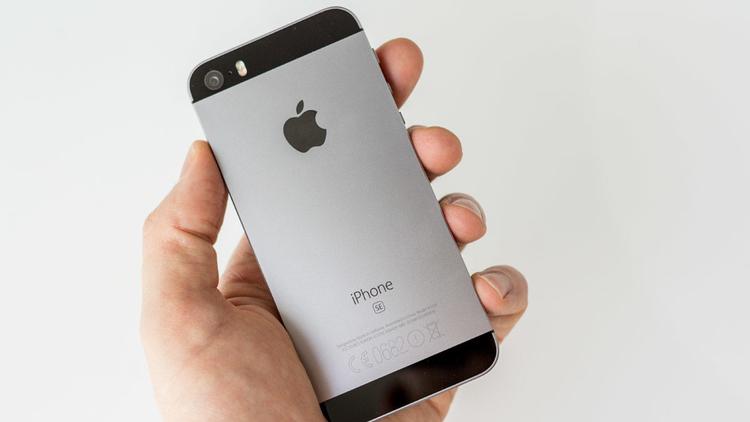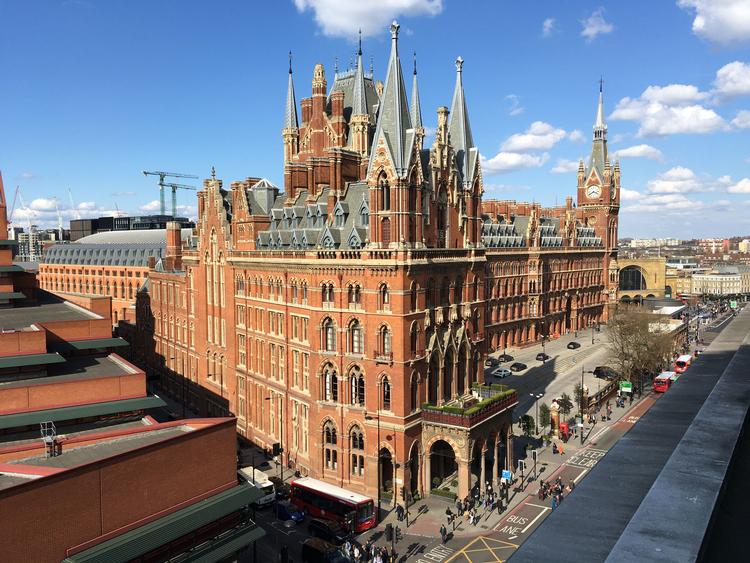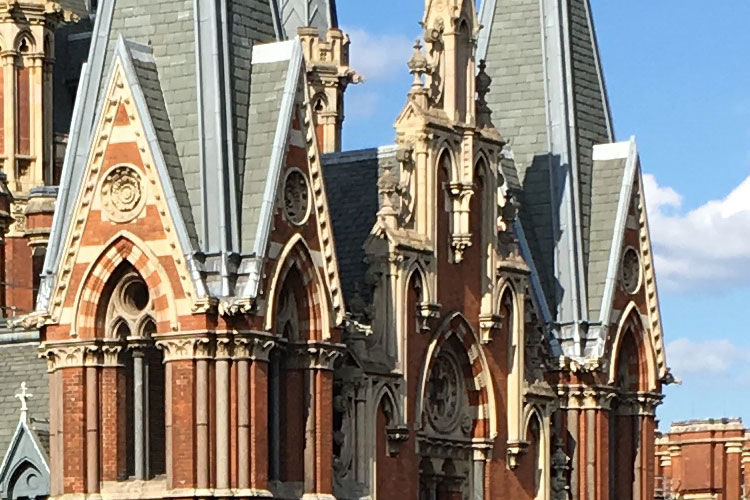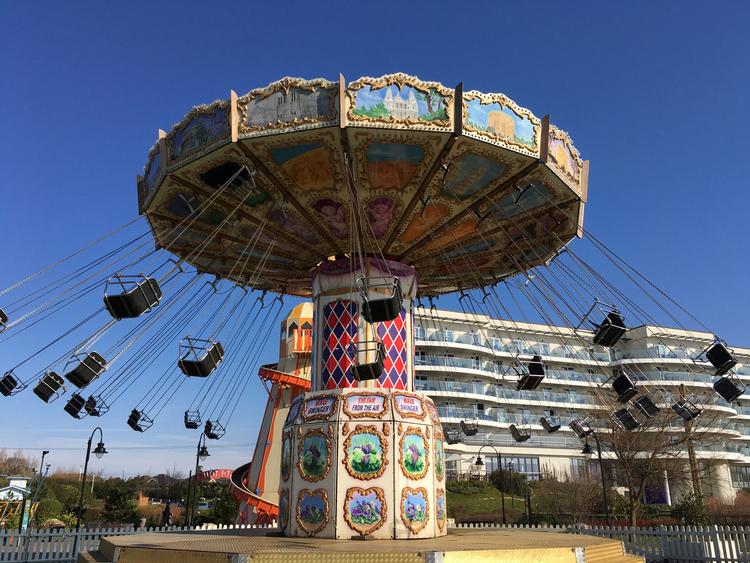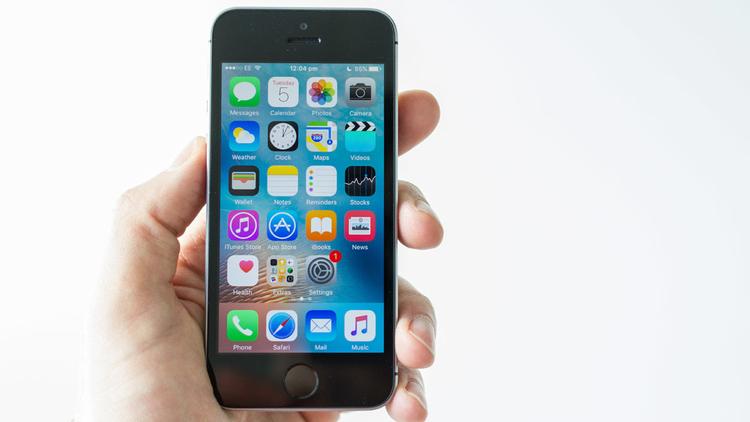At a glance, only the new rose gold finish differentiates the iPhone SE from its predecessor, the iPhone 5S. We had expected a miniature version of the iPhone 6S with rounded edges, but instead Apple has decided to simply bring the iPhone 5S up to date. It’s clever thinking: any cases or accessories people bought for their iPhone 5 or 5S will fit straight onto the SE and save them even more money. Yet the upgrade is huge: this new baby iPhone has the same processor and 12Mp camera as the iPhone 6S and also brings Apple Pay to the 4in form factor. Apple believes there’s big demand for small phones and, based on the amount of interest and positive comments we had from people trying out our SE during the review, we’d have to say it’s not exaggerated.
Apple iPhone SE review: Price and models
Following a small price rise due to Brexit, Apple has also refreshed the iPhone SE line-up on 21 March 2017. The phone will still cost £379 (it was originally £359) but now comes with double the amount of storage. That means you’ll get 32GB for the lower price and if you can afford £479 then you’ll get 128GB. This means if you want the older 16GB model, you can get it for a cheaper price. John Lewis has it for £329, for example. Meanwhile, the 64GB model can be yours for £379, also from John Lewis. You can take your pick from Space Grey, Silver, Gold and Rose Gold – the latter three have white faces; the Space Grey is the only one with a black front.
Apple iPhone SE review: Design
There’s not much to say about the design that hasn’t been said before. After all, this is a chassis which first appeared in 2012 and was re-used for the iPhone 5S a year later. On the outside, the only things that have changed from the 5 and 5S are a stainless steel insert on the rear for the Apple logo and what Apple calls ‘matte-chamfered edges’. Instead of the shiny chamfers created by the milling process, the SE has bead-blasted aluminium which gives the whole frame a matt finish. It’s such a minor difference, and you won’t even see them if you put the phone in Apple’s leather case, which comes in blue and black and costs £29. The case itself is identical – as far as we can tell – to the iPhone 5S version which came in tan leather, among other colours. A point of interest is that unlike the iPhone 6 and 6S, the SE does not have a protruding camera. Instead, the arrangement is exactly like the iPhone 5S with a flush lens and a tall pill-style dual-LED flash. The absence of the scratch-resistant sapphire cover glass is one area where money has been saved, but it’s likely that the re-use of some of the iPhone 5 / 5S tooling is where the real savings come from. The screen, for example, is identical to the 5S. It has the same 1136×640 resolution, 800:1 contrast ratio and 500cd/m2 maximum brightness, so it must be cheaper to manufacturer these days. And while it’s easy to mock the screen for not being ‘HD’, the 326ppi is all you need for sharp-looking images and video on a screen this small. It doesn’t have the 3D Touch capability of the 6S and 6S Plus, but you’re unlikely to miss it, especially if you’re upgrading from a 5 or 5S and therefore haven’t had it. Contrast is noticeably poorer than on the improved iPhone 6 and 6S screens, with blacks being a little greyer, but one benefit is that you should be able to replace it cheaply if you accidentally smash it. The biggest advantage of the small dimensions is that you can easily slip the phone into your trouser pocket or take it running with you. It makes the 6S Plus feel big and bulky but while you can reach the whole screen with one hand, typing using the on-screen keyboard does feel cramped if you’re already used to a larger display. Now that we’re used to the larger screens of the 4.7- and 5.5in iPhones, it’s hard not to want to reach for them when you need to type a long email reply. You could also criticise the SE for having the slower, previous-generation Touch ID sensor, but many people will prefer it as it won’t unlock your phone when all you intended was to turn on the screen to check notifications. And as we’ve said, it can now support Apple Pay thanks to the inclusion of NFC. And now, with Barclays finally adding its support, you can use it with all the major UK banks. It means you can use your iPhone SE to pay for a journey on the London Underground and then in Starbucks for a coffee And when you’re on the coffee shop Wi-Fi, the SE goes faster than the 5S supporting 802.11ac up to 433Mb/sec. Good luck finding free Wi-Fi with that kind of speed, though. Cellular data also goes faster with support for 150Mb/sec LTE on 19 bands. That could be good news if you travel a lot, but it’s unlikely to be your top priority when choosing a new phone. A more tangible improvement is you can say Hey Siri any time – even when the SE isn’t connected to power and the digital assistant will respond.
Apple iPhone SE review:Hardware and performance
With the 64-bit A9 chip, M9 motion co-processor and the same allocation of RAM – 2GB – it’s no surprise that the SE is a speedy phone. In fact, with fewer pixels to drive, it’s actually faster than the iPhone 6S in certain tests. In Geekbench 3 it scored 2360, and 4229 in multi-core mode. The iPhone 5S managed 1076 in the single-core test, and the iPhone 5 just 721. For multi-core the 5S scored 2516 points. In GFXbench GL, the SE hit the heady heights of 60fps in the older T-Rex test and wasn’t far behind in Manhattan with 57fps. Compare that to the iPhone 5S with 37fps in T-Rex and just 14fps for the iPhone 5. The 5S could only manage 27fps in Manhattan. The iPhoine 6S, meanwhile, scored 60fps in T-Rex and 52fps in Manhattan: those extra pixels do take their toll. Something that doesn’t shine out in benchmark results is that the extra RAM means you can have lots of tabs open in Safari or Chrome without suffering from the slow-downs you’ll experience on an iPhone 5 and – to a lesser extent – a 5S. Although there are plenty of upgrades, the iPhone SE doesn’t have a barometer, so it won’t track how many flights of stairs you’ve climbed. It’s unlikely to put you off buying one, though. If you do want to track your daily ascent, you can buy an activity tracker such as a Fitbit Charge. Battery life is very good: we found that the SE typically lasted a couple of hours longer than the iPhone 5S when watching videos or browsing the web. With light use, the SE will easily last two days, but with heavy use, you’ll struggle to get a full day out of it before needing to reconnect the Lightning cable.
Apple iPhone SE review: Cameras
As we’ve said, the rear camera isn’t identical to the iPhone 6S, but it does have the same 12Mp sensor and also the fast image signal processor. This means that you can shoot higher-resolution panoramas (63Mp) than on the iPhone 5S (28Mp). It also means support for 4K video recording, as well as the brilliant 240fps slo-mo mode at 720p or 120fps at 1080p. There’s no optical stabilisation as you get with the 6S Plus, but there are Focus Pixels for fast focussing and ‘cinematic video stablisation’ – i.e. software-based stabilisation. While recording 4K video you can take 8Mp still photos, which is handy. The iPhone SE also supports Live Photos, if you care, which can now be shared to Facebook and Tumblr, not just other iOS or Mac users. Thanks to the A9 processor, you can edit 4K video in iMovie right on the phone and then upload it in 4K to YouTube. Unlike the iPad Pro, iMovie on the SE supports only two streams of 4K video, which is necessary to blend two clips together using a transition. If you prefer a frame rate higher than 30fps, you can switch to 1080p60 and shoot in that super-smooth mode. The only niggle is that Apple still doesn’t let you change video quality within the camera app in iOS 9.3: you still have to dig into the Settings app. And considering 60fps is all but useless at night (the fast frame rate makes the image too dark) there really needs to be an easier way to switch between 30- and 60fps. Image quality is virtually indistinguishable from the iPhone 6S. In general, that’s a good thing. The camera takes reliably good shots, with great colours and exposure. It does struggle a little with fast-moving subjects, especially in anything other than bright outdoor conditions where you tend to get blurry faces. Here’s our standard St Pancras photo, resized to 2000 pixels wide (click to enlarge). It’s a classic example of how well the iPhone camera performs in good light: it’s perfectly exposed and exhibits great detail and sharpness. Here’s a 100 percent crop of the original photo so you can see exactly how sharp and detailed it is. It’s perhaps a little softer than you’d like but it’s good that you can still make out individual bricks, showing that photos aren’t compressed too highly. Phones like the Samsung Galaxy S7 offer better sharpness and generally better quality in very low light. However, that reflects badly not on the SE but rather Apple’s pricier phones. The iPhone hides noise well, although you can see when the noise-removing algorithms have done their thing: details become smudgy when you inspect a photo closely (this is a 100 percent crop from an indoor photo): Here are some more photos: quality is really no different from the iPhone 6S: When called for, the auto HDR mode kicks in and helps to retain shadow and highlight detail where otherwise one or the other would have been lost. As we had expected, video quality is excellent. Whether you choose 1080p or 4K, footage is sharp thanks to the great focusing system which works quickly. Colours are just as good as in photos: vibrant yet not unrealistic. Audio quality is also excellent, with the rear-facing microphone (which Apple says is upgraded from the iPhone 5S) capturing what people say in front of the camera rather than ambient noise around you. Here’s a clip shot on our 7th floor balcony in 4K. Unfortunately, although our embedded player supports 4K, the video is highly compressed so you’re not seeing the full quality. Trust us, quality is excellent when you watch the original video on a 4K monitor. Like the iPhone 6S, the screen can double as a flash for the front camera and the tone matches the ambient light (like the True Tone flash on the rear) to give a more natural-looking photo in dim conditions. What you will notice is the low 1.2Mp resolution of the front camera. It’s another cost-saving measure: you don’t get the 5Mp FaceTime camera of the iPhone 6S.
Apple iPhone SE review:iOS 9.3
The iPhone SE ships with iOS 9.3, which includes a few notable features, one of which is Night Shift. This changes the colour temperature of the screen to reduce the amount of blue light emitted at night. Studies have shown that staring at LCD screens before bed makes it harder to fall asleep, and this is one way to try to offset that. It’s a feature you won’t find on the iPhone 5 or 5C, even when updated to 9.3. You could, of course, simply not use your phone for long periods close to bed time, but it’s another reason to upgrade to an SE. You also get password-protected notes and – as we’ve said – the ability to call on the services of Siri without touching the phone. This is really handy when you’re driving since you can say “Tell Jon that I’m running late and I’ll be there in about 20 minutes” and a text message will be sent with no physical interaction at all. And aside from our gripe about hard-to-reach camera settings and a couple of other minor quibbles, iOS is still a slick and easy-to-use operating system, even on a tiny 4in screen. It’s especially slick on the SE thanks to the extra power on tap, and it really feels like an upgrade when compared with the ageing iPhone 5 which struggles noticeably with iOS 9. You can read more in our iOS 9 vs Android Marshmallow comparison. Jim has been testing and reviewing products for over 20 years. His main beats include VPN services and antivirus. He also covers smart home tech, mesh Wi-Fi and electric bikes.




